How to Get Rid of Mould on Bathroom Ceiling: Effective Solutions & Prevention Tips
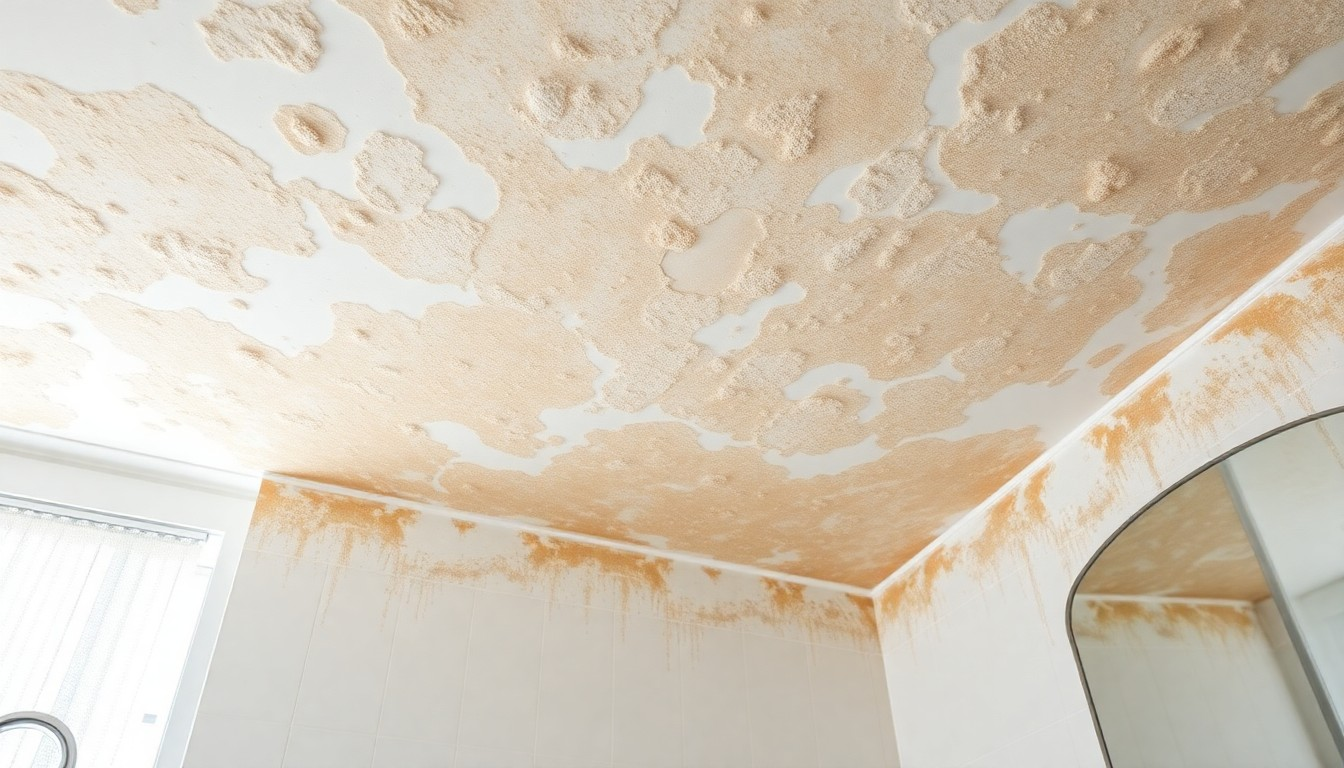
Mould on your bathroom ceiling is more than just an eyesore—it’s a health hazard and a sign of excess moisture.
If left unchecked, it spreads fast, causing stains, musty odors, and even respiratory issues.
But don’t worry—you can get rid of mould effectively and prevent it from coming back with the right approach.
What Causes Mould on Bathroom Ceilings?
Mould thrives in warm, damp, and poorly ventilated spaces. Your bathroom ceiling is a prime target because:
- Steam from showers creates excess moisture.
- Poor ventilation traps humidity.
- Leaky pipes or roofs introduce water.
- Condensation buildup occurs when warm air meets a cold surface.
If you don’t fix the root cause, mould will keep coming back—no matter how often you clean it.
How to Get Rid of Mould on Bathroom Ceiling
1. Protect Yourself Before Cleaning
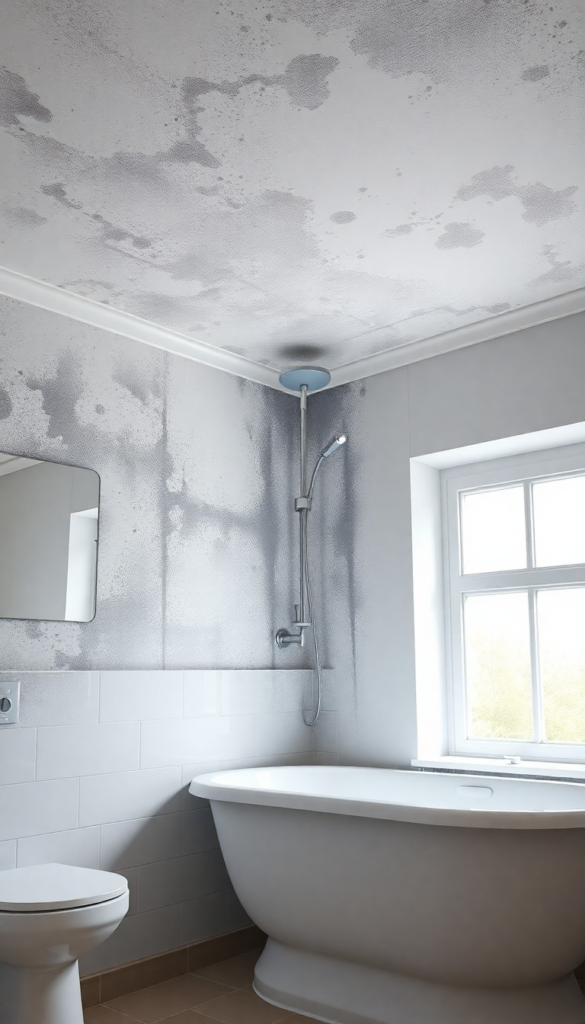
Mould spores can trigger allergies, asthma, and irritation, so take precautions before cleaning.
- Wear rubber gloves, a face mask, and safety goggles.
- Open windows and doors for ventilation.
- Cover the floor and fixtures with plastic or old towels.
2. Choose the Right Cleaning Solution
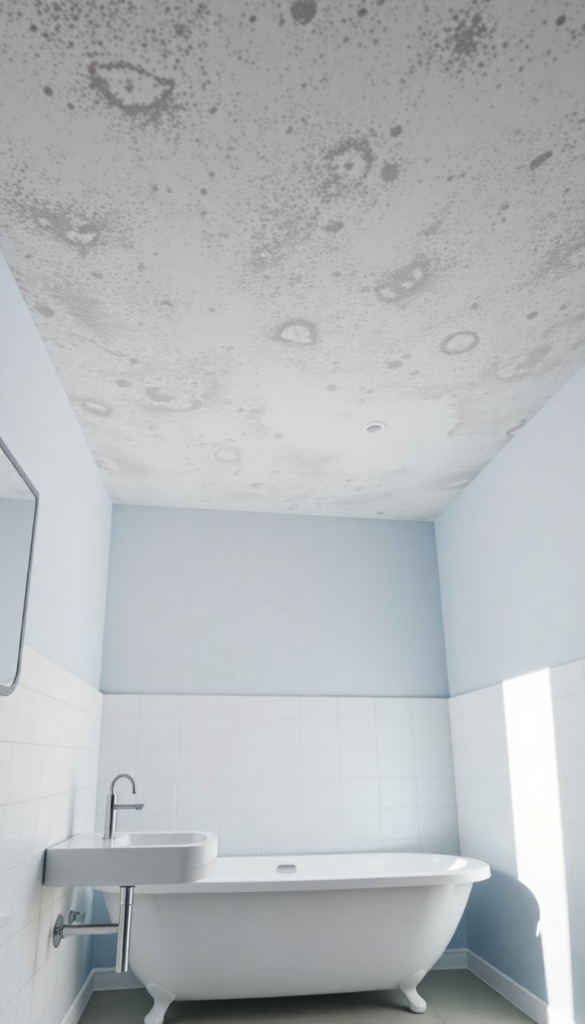
Different cleaning solutions work depending on the severity of the mould.
White Vinegar (Best Natural Option)
- Kills 82% of mould spores without toxic chemicals.
- Pour undiluted white vinegar into a spray bottle.
- Spray directly on the mouldy ceiling and let it sit for an hour.
- Wipe with a clean cloth and rinse with warm water.
Hydrogen Peroxide (Powerful Disinfectant)
- Works as a fungicide, antiviral, and antibacterial agent.
- Use 3% hydrogen peroxide and spray it on mouldy areas.
- Let it foam for 10–15 minutes, then scrub and wipe clean.
Baking Soda (Gentle and Non-Toxic)
- Absorbs moisture and eliminates odours.
- Mix one teaspoon of baking soda with water in a spray bottle.
- Spray on mould, scrub with a sponge, and rinse.
Bleach (For Stubborn Mould)
- Effective for removing black mould stains but doesn’t prevent regrowth.
- Mix one part bleach with three parts water.
- Apply with a sponge or spray bottle, scrub, and rinse thoroughly.
3. Scrub and Remove Mould
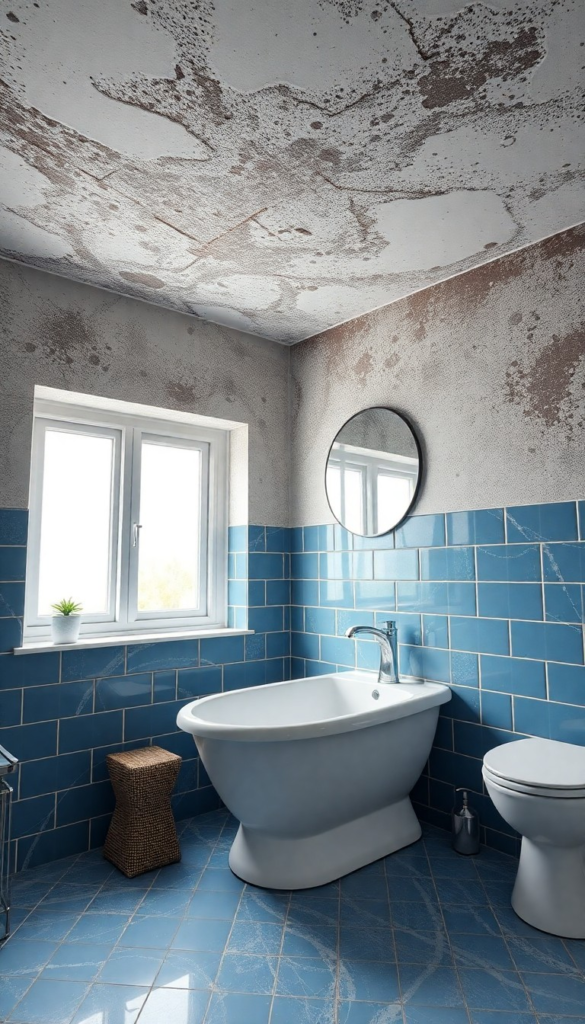
- Use a stiff-bristle brush or sponge for scrubbing.
- For textured ceilings, use a toothbrush to reach crevices.
- Wipe with a damp cloth to remove excess cleaning solution.
4. Dry the Ceiling Completely
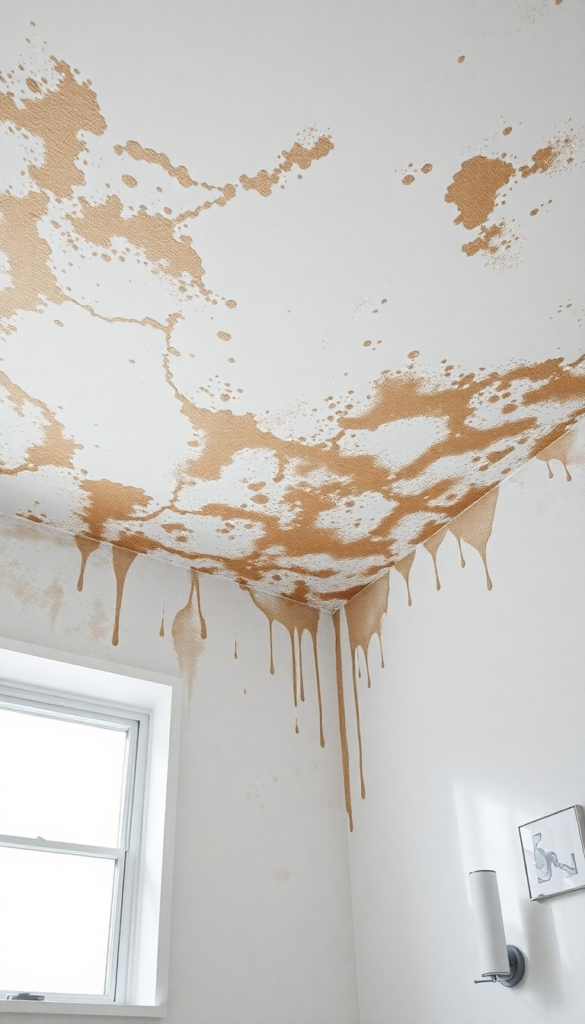
Mould thrives in moisture, so drying is crucial.
- Use a fan or dehumidifier to remove excess moisture.
- Open windows and doors to increase airflow.
- If the bathroom lacks ventilation, leave a heater on low for a few hours.
How to Prevent Mould from Coming Back
5. Improve Bathroom Ventilation
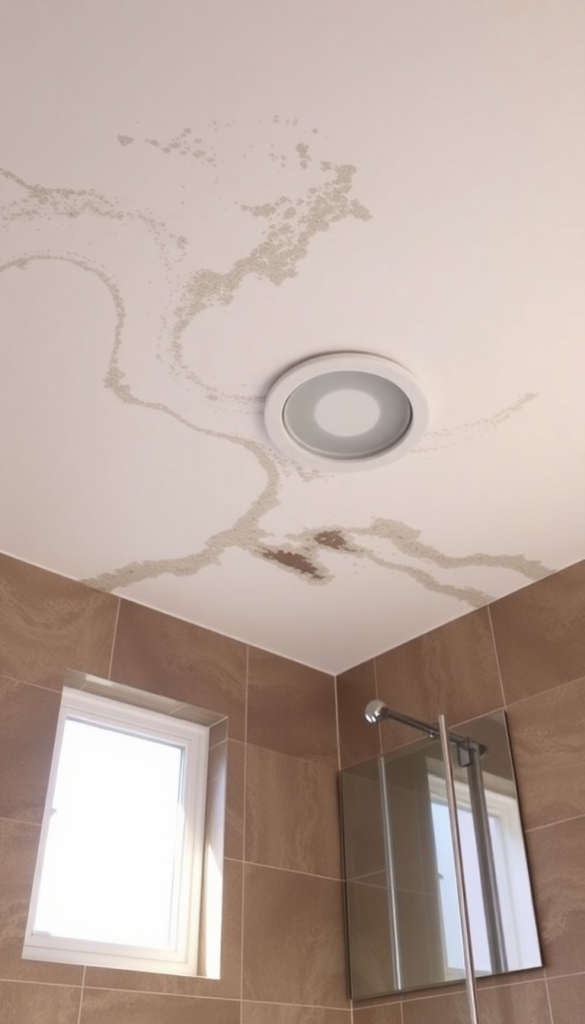
- Install a high-powered exhaust fan and run it for 20 minutes after showering.
- If you don’t have a fan, open a window or use a portable fan.
- Keep the bathroom door open after showers to let steam escape.
6. Reduce Humidity Levels
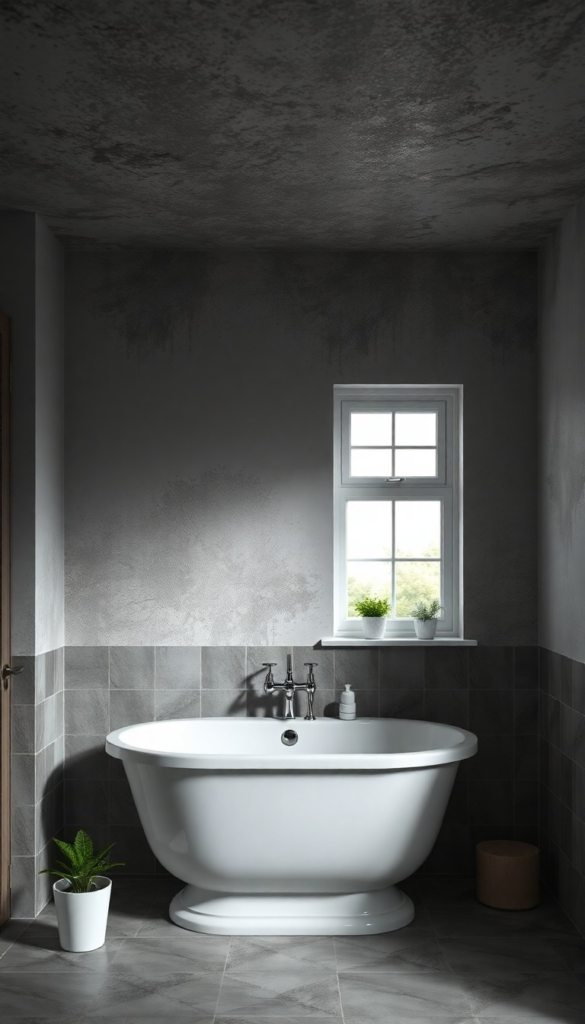
- Keep humidity below 50% using a dehumidifier.
- Wipe down walls, mirrors, and the ceiling after steamy showers.
- Use a moisture-absorbing desiccant like silica gel or charcoal.
7. Fix Leaks and Water Damage
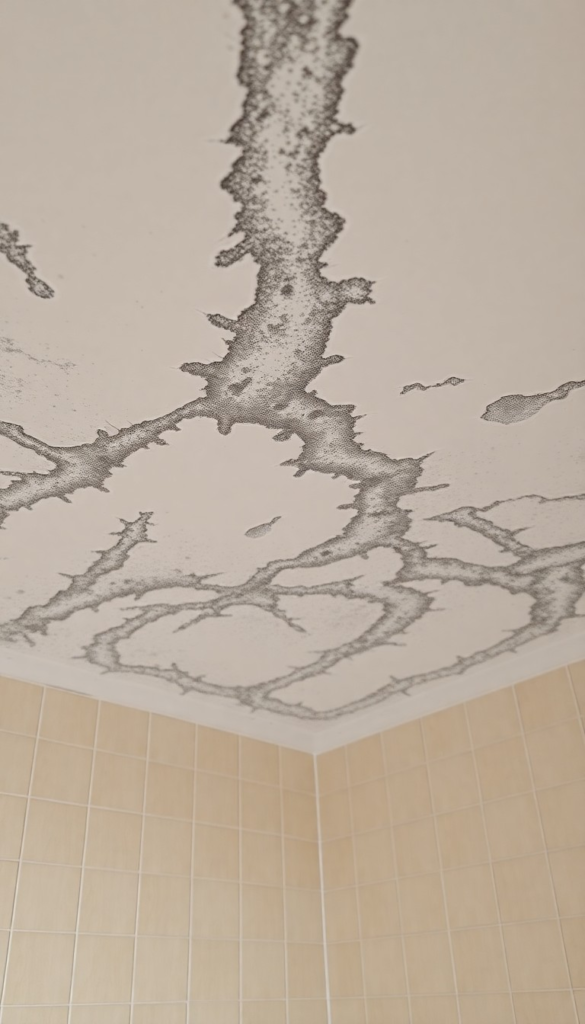
Leaks from pipes, roofs, or tiles cause hidden moisture buildup.
- Inspect for water stains or peeling paint on the ceiling.
- Check for loose tiles or cracked grout near showers.
- Fix plumbing leaks immediately to prevent moisture accumulation.
8. Use Mould-Resistant Paint
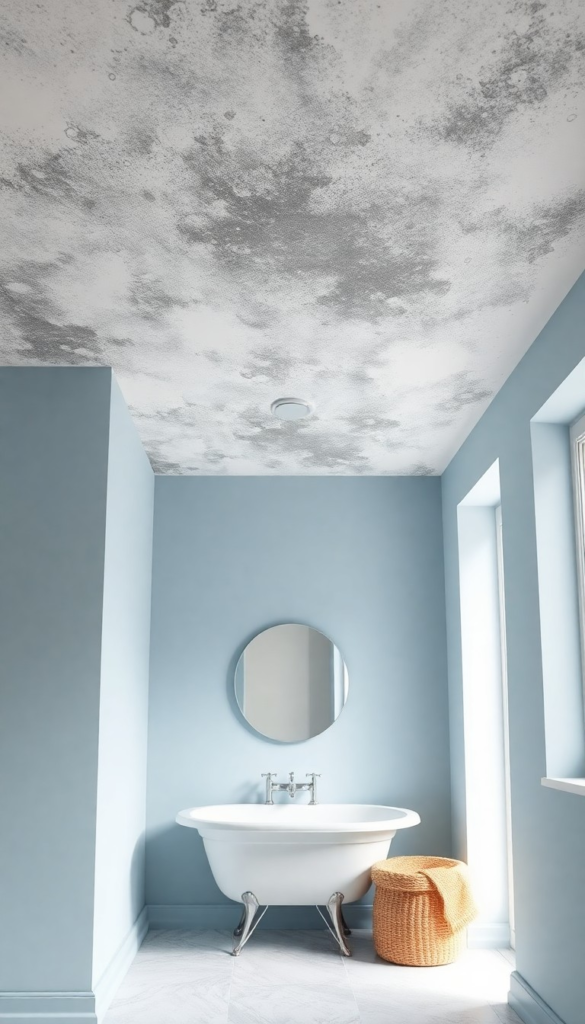
If mould keeps returning, repaint your ceiling with mould-resistant paint.
- Apply a mould-killing primer before painting.
- Use semi-gloss or satin paint instead of flat paint, which absorbs moisture.
- Consider anti-mould additives like Zinsser Mold Killing Primer.
9. Clean Regularly to Prevent Growth
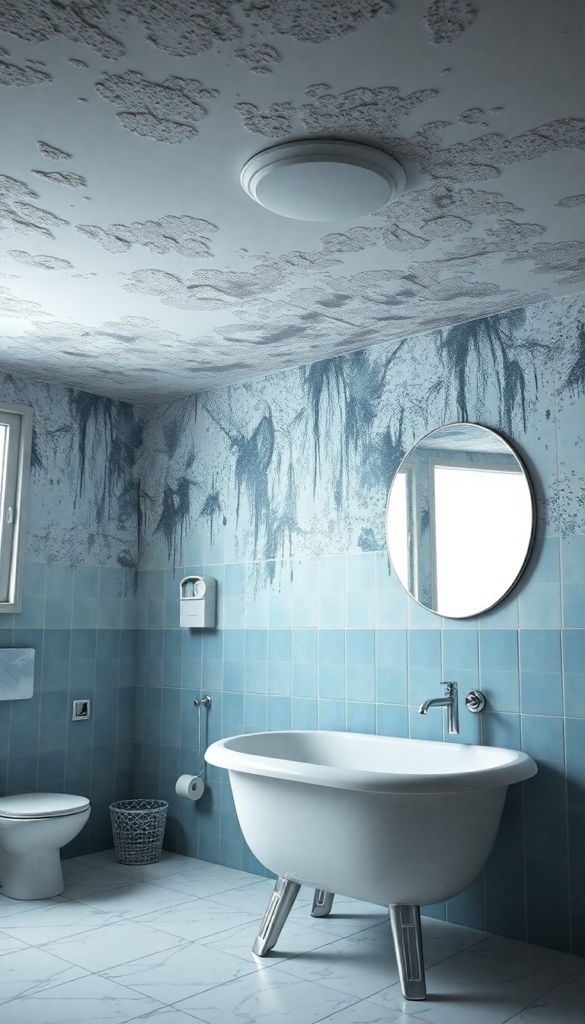
Routine cleaning prevents mould from taking hold.
- Spray your ceiling weekly with a vinegar-water solution.
- Clean shower curtains and tiles to reduce spore buildup.
- Avoid leaving wet towels and bath mats in the bathroom.
10. Keep Air Circulating with a Ceiling Fan
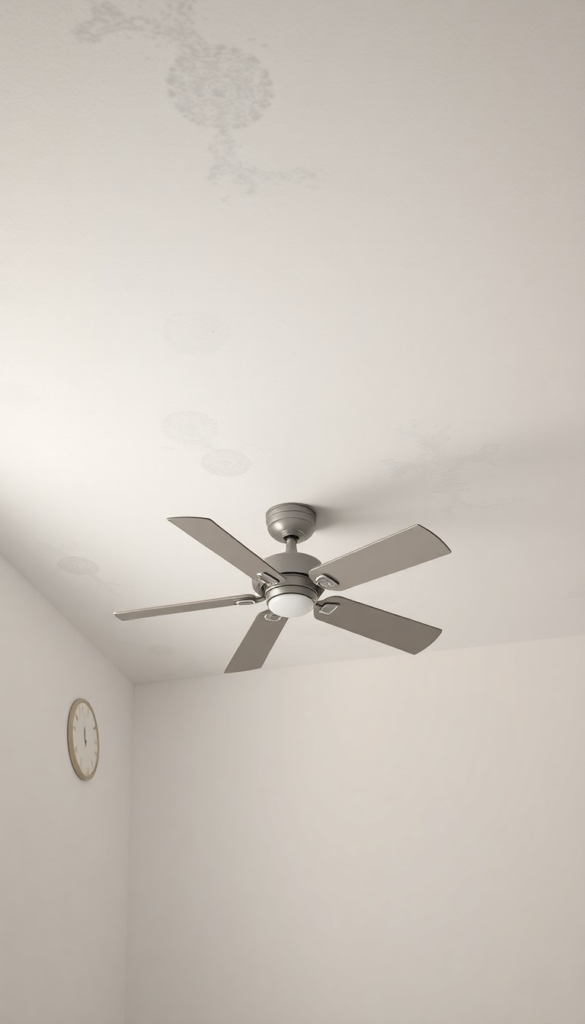
If your bathroom allows, install a small ceiling fan. It keeps air moving, reducing moisture buildup on the ceiling.
11. Use an Anti-Mould Spray Monthly
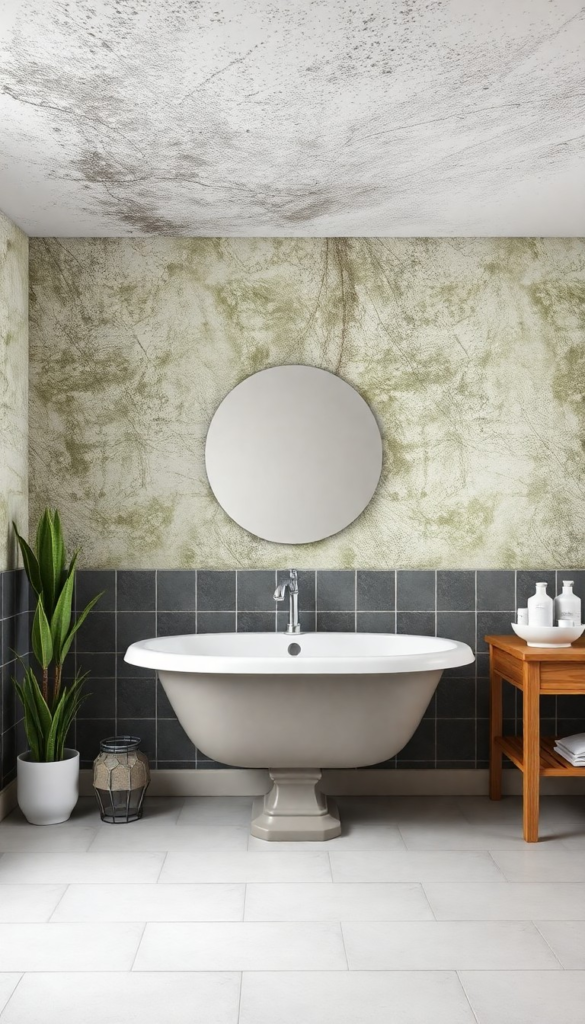
Prevent regrowth by spraying anti-mould solutions monthly.
Store-bought sprays like Concrobium Mold Control work well for long-term prevention.
When to Call a Professional
If mould covers more than 10 square feet, spreads behind walls, or has a musty, persistent smell, it’s best to call a mould removal specialist.
Toxic black mould (Stachybotrys chartarum) requires professional remediation to ensure safety.
Final Thoughts
Mould on your bathroom ceiling doesn’t stand a chance if you act quickly and stay consistent with moisture control.
Clean it properly, fix underlying moisture issues, and use preventative measures to keep your bathroom fresh, clean, and mould-free.
Now that you know how to tackle mould, what’s the first change you’ll make in your bathroom? Let me know how these tips work for you!





